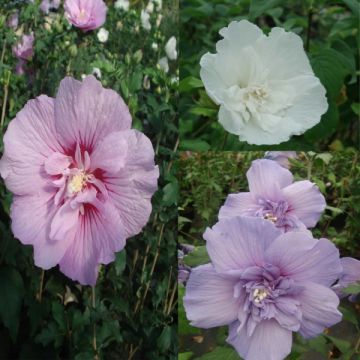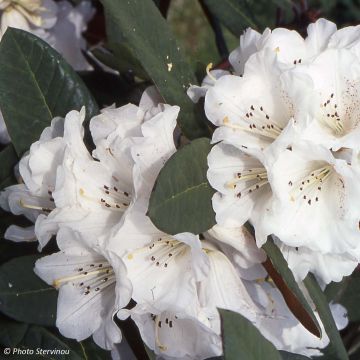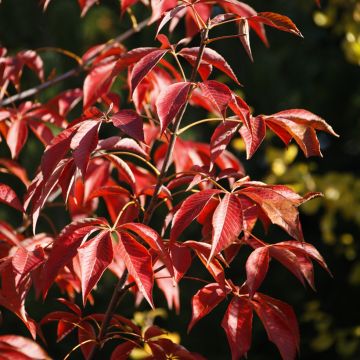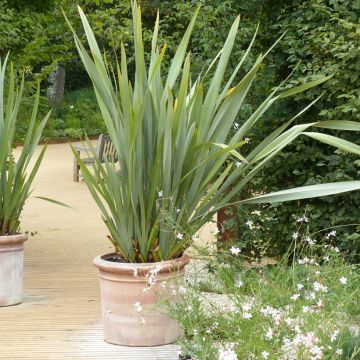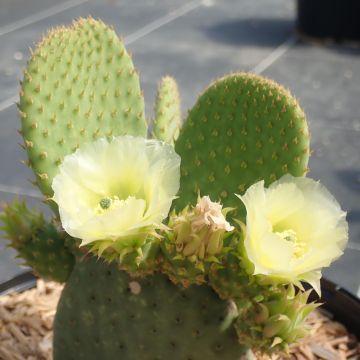

Hakea victoria - Hakea royal


Hakea victoria - Hakea royal
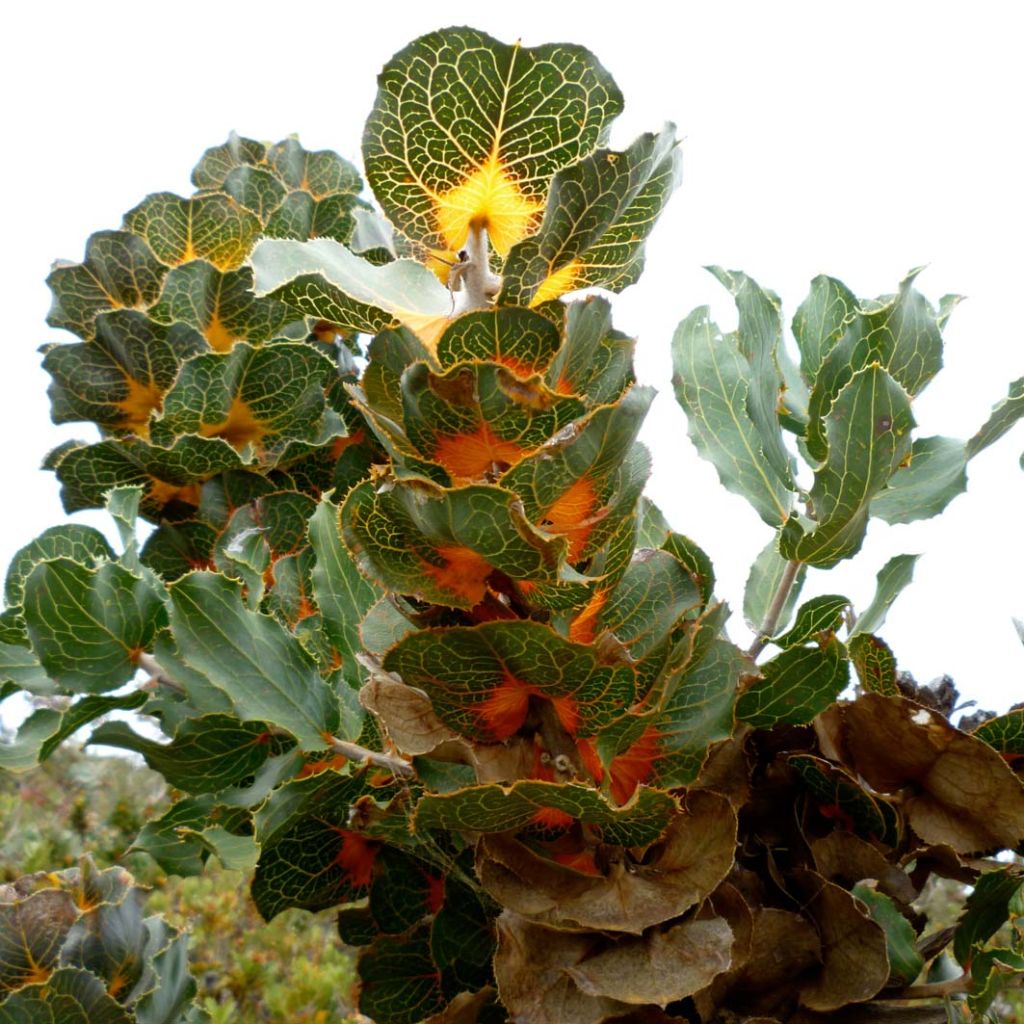

Hakea victoria - Hakea royal
Hakea victoria
Hakea victoria
This item cannot be shipped to the selected country
Delivery charge from €5.90
More information
Schedule delivery date,
and select date in basket
This plant carries a 24 months recovery warranty
More information
We guarantee the quality of our plants for a full growing cycle, and will replace at our expense any plant that fails to recover under normal climatic and planting conditions.
From €5.90 for pickup delivery and €6.90 for home delivery
Express home delivery from €8.90.

Does this plant fit my garden?
Set up your Plantfit profile →
Description
Plant lovers looking for a challenge. This amazing perennial shrub with bushy growth is cultivated for the appeal of its large leathery leaves, which vary in colour from green-grey to yellow, orange, and red depending on the season. It is a heat and drought-tolerant cousin of the proteas, but sensitive to cold and wind. Strange, spectacular, and fascinating, it is best grown in large pots outside the mildest areas, not only to control the composition of the growing substrate but also because it is imperative to store the plant above -5°C (23 °F) over winter.
Hakea victoria is a perennial shrub of the protea family. It is endemic to the coastal and semi-desert regions of Western Australia where it was discovered in 1847 by the botanist James Drummond. In humid regions, the foliage rarely develops the intense colouring that makes this plant so attractive. Strange in every way, proteas need fire to germinate their seeds. The Hakea develops multiple thick, sparsely branched stems, giving it an upright and narrow habit. It reaches an average height of 2m (6 ft 7 in) with a spread of 1m (3 ft 4 in) under good conditions. The stems bear alternate, rounded, undulate, leathery, rigid, concave leaves measuring about 20cm (7.9 in) by 12cm (4.7 in). They are strongly toothed and have spines along the edges. The leaf is traversed by clear and highly visible veins and adopts a whole range of colours ranging from cream to yellow, orange, and red, which are more pronounced in dry soil. Flowering occurs from February to March, in the axils of the large leaves. These are inflorescences consisting of 26 to 40 small cream-white to pale yellow flowers, which have little ornamental interest but are loved by pollinating insects. They give way to woody pods about 25mm (1 in) long containing two winged seeds. These pods only release the seeds after the passage of fire.
Hakea victoria is a sensational plant that leaves no one indifferent. It will settle in sheltered coastal gardens, spared from heavy frosts, in light, poor, sandy soil. Particularly adapted to the Mediterranean climate, it tolerates poor, dry to arid soils and will look good when isolated on large slopes or in the background of dry garden beds, but always in an open position, in full sun. In an exotic garden, it can be associated with Canarian or Madeiran Echium, Puya, Euphorbia characias, Euphorbia mellifera, Leptospermum, Leucadendron, or even Melianthus major.
An original root system adapted to poor and dry soils:
Plants that grow in nutrient-poor soils often form a symbiosis with soil fungi that promote water and nutrient absorption. But proteas have chosen a different strategy: they develop a large number of specialized lateral roots along their main roots. These roots are called proteoid roots and are induced by rainfall; they develop under the layer of dead leaves that cover the base of the plant. Rainfall promotes the decomposition of leaves, resulting in the release of nutrients. These ephemeral roots usually dry up at the end of the growing season. They have twice the water and nutrient absorption activity of "normal" roots.
Report an error about the product description
Hakea victoria in pictures
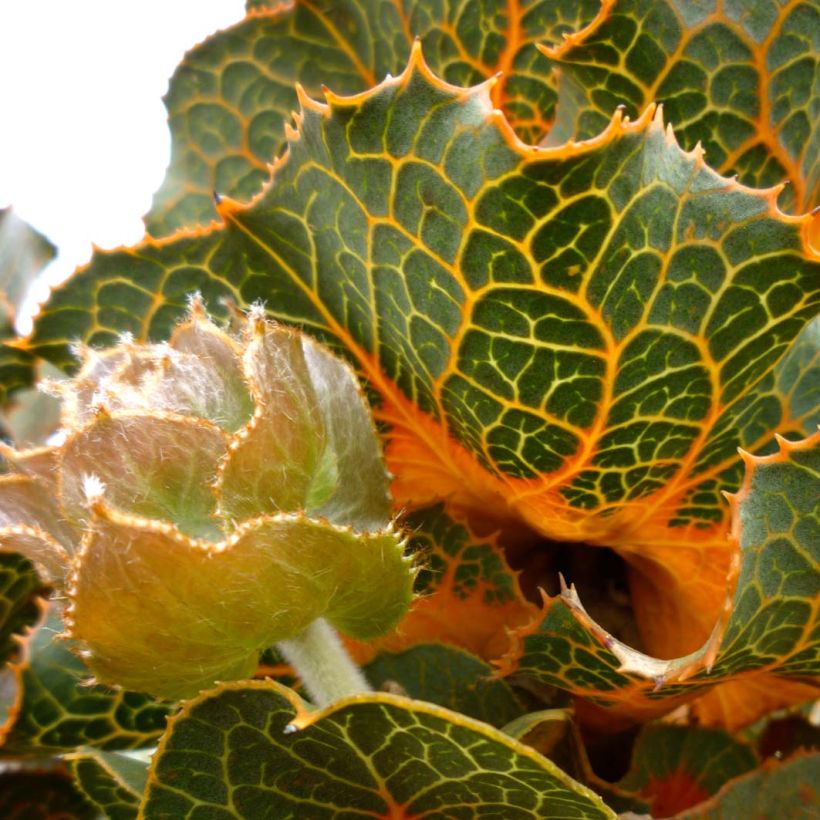





Plant habit
Flowering
Foliage
Botanical data
Hakea
victoria
Proteaceae
Australia
Other Shrubs A to Z
Planting and care
Plant Hakea victoria in spring, or autumn in a very mild climate, in a very sunny location sheltered from winds. This plant requires light, well-drained, poor, soil with a tendency towards acidity or neutrality (6.5<pH<7.5), low in limestone. It tolerates summer drought very well once well established. A mixture of leaf compost, a little ericaceous soil or crushed pine bark, and coarse river sand or perlite will work. Proteaceae are sensitive to excess phosphates and nitrates, so it is necessary to avoid giving too much fertilizer, a small amount applied at the base of the plant in spring is generally sufficient. While mature plants tolerate occasional frost down to -5°C (23 °F) in dry soil, young plants should be protected from frost during their first few years, either in a frost-free area in cool climates or under fleece in regions with mild winters. For indoor cultivation, it is important to ensure good ventilation in the room and to avoid watering with water that is too high in calcium (mineral waters or low-calcium spring waters will work well, compare labels).
Planting period
Intended location
Care
-
, onOrder confirmed
Reply from on Promesse de fleurs
Evergreen shrubs
Haven't found what you were looking for?
Hardiness is the lowest winter temperature a plant can endure without suffering serious damage or even dying. However, hardiness is affected by location (a sheltered area, such as a patio), protection (winter cover) and soil type (hardiness is improved by well-drained soil).

Photo Sharing Terms & Conditions
In order to encourage gardeners to interact and share their experiences, Promesse de fleurs offers various media enabling content to be uploaded onto its Site - in particular via the ‘Photo sharing’ module.
The User agrees to refrain from:
- Posting any content that is illegal, prejudicial, insulting, racist, inciteful to hatred, revisionist, contrary to public decency, that infringes on privacy or on the privacy rights of third parties, in particular the publicity rights of persons and goods, intellectual property rights, or the right to privacy.
- Submitting content on behalf of a third party;
- Impersonate the identity of a third party and/or publish any personal information about a third party;
In general, the User undertakes to refrain from any unethical behaviour.
All Content (in particular text, comments, files, images, photos, videos, creative works, etc.), which may be subject to property or intellectual property rights, image or other private rights, shall remain the property of the User, subject to the limited rights granted by the terms of the licence granted by Promesse de fleurs as stated below. Users are at liberty to publish or not to publish such Content on the Site, notably via the ‘Photo Sharing’ facility, and accept that this Content shall be made public and freely accessible, notably on the Internet.
Users further acknowledge, undertake to have ,and guarantee that they hold all necessary rights and permissions to publish such material on the Site, in particular with regard to the legislation in force pertaining to any privacy, property, intellectual property, image, or contractual rights, or rights of any other nature. By publishing such Content on the Site, Users acknowledge accepting full liability as publishers of the Content within the meaning of the law, and grant Promesse de fleurs, free of charge, an inclusive, worldwide licence for the said Content for the entire duration of its publication, including all reproduction, representation, up/downloading, displaying, performing, transmission, and storage rights.
Users also grant permission for their name to be linked to the Content and accept that this link may not always be made available.
By engaging in posting material, Users consent to their Content becoming automatically accessible on the Internet, in particular on other sites and/or blogs and/or web pages of the Promesse de fleurs site, including in particular social pages and the Promesse de fleurs catalogue.
Users may secure the removal of entrusted content free of charge by issuing a simple request via our contact form.
The flowering period indicated on our website applies to countries and regions located in USDA zone 8 (France, the United Kingdom, Ireland, the Netherlands, etc.)
It will vary according to where you live:
- In zones 9 to 10 (Italy, Spain, Greece, etc.), flowering will occur about 2 to 4 weeks earlier.
- In zones 6 to 7 (Germany, Poland, Slovenia, and lower mountainous regions), flowering will be delayed by 2 to 3 weeks.
- In zone 5 (Central Europe, Scandinavia), blooming will be delayed by 3 to 5 weeks.
In temperate climates, pruning of spring-flowering shrubs (forsythia, spireas, etc.) should be done just after flowering.
Pruning of summer-flowering shrubs (Indian Lilac, Perovskia, etc.) can be done in winter or spring.
In cold regions as well as with frost-sensitive plants, avoid pruning too early when severe frosts may still occur.
The planting period indicated on our website applies to countries and regions located in USDA zone 8 (France, United Kingdom, Ireland, Netherlands).
It will vary according to where you live:
- In Mediterranean zones (Marseille, Madrid, Milan, etc.), autumn and winter are the best planting periods.
- In continental zones (Strasbourg, Munich, Vienna, etc.), delay planting by 2 to 3 weeks in spring and bring it forward by 2 to 4 weeks in autumn.
- In mountainous regions (the Alps, Pyrenees, Carpathians, etc.), it is best to plant in late spring (May-June) or late summer (August-September).
The harvesting period indicated on our website applies to countries and regions in USDA zone 8 (France, England, Ireland, the Netherlands).
In colder areas (Scandinavia, Poland, Austria...) fruit and vegetable harvests are likely to be delayed by 3-4 weeks.
In warmer areas (Italy, Spain, Greece, etc.), harvesting will probably take place earlier, depending on weather conditions.
The sowing periods indicated on our website apply to countries and regions within USDA Zone 8 (France, UK, Ireland, Netherlands).
In colder areas (Scandinavia, Poland, Austria...), delay any outdoor sowing by 3-4 weeks, or sow under glass.
In warmer climes (Italy, Spain, Greece, etc.), bring outdoor sowing forward by a few weeks.



































